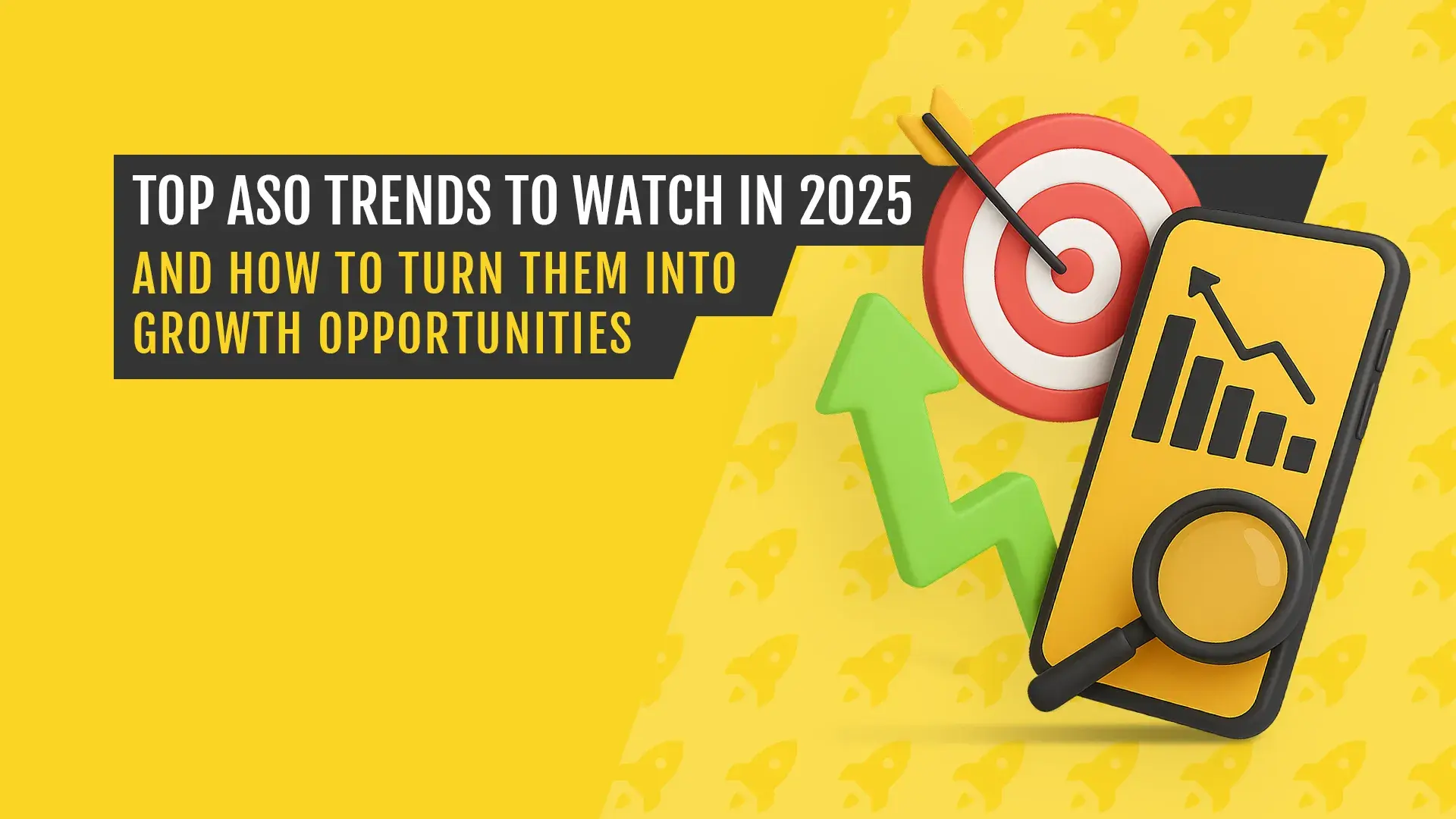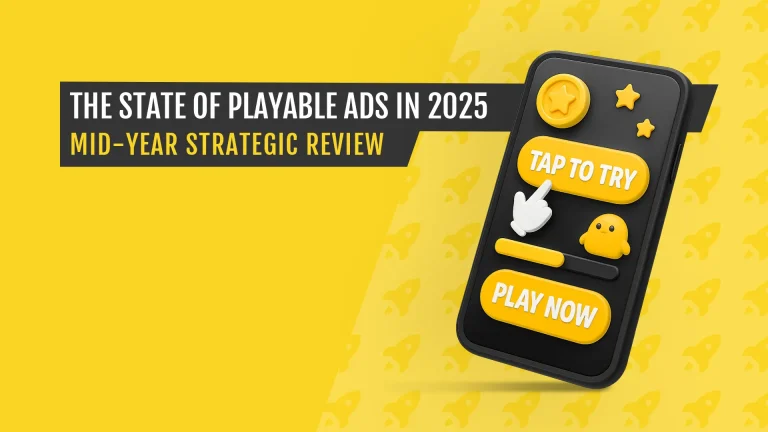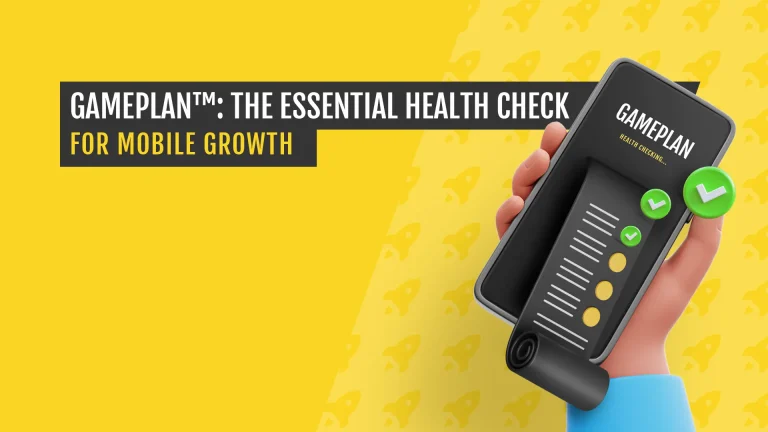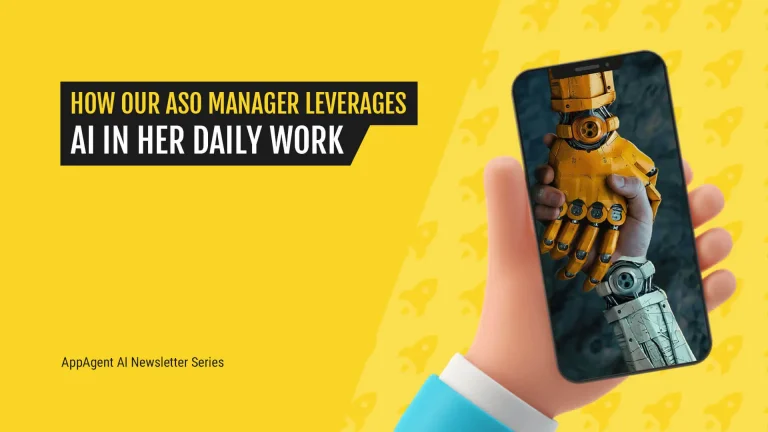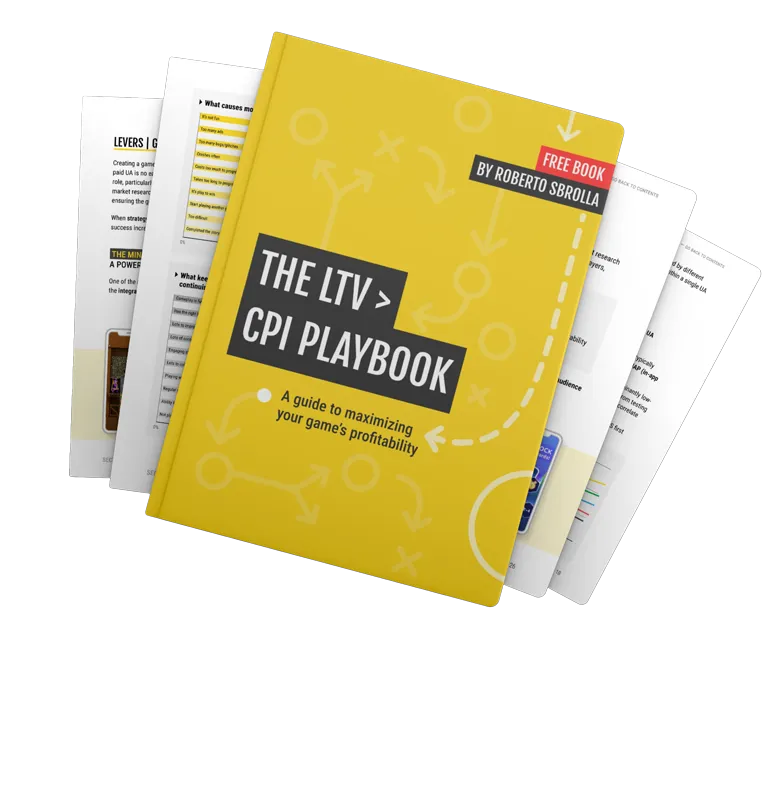App Store Optimization (ASO) is an art that involves many moving parts – from metadata optimization and Conversion Rate Optimization (CRO) to in-app events, CPP, CSL, managing ratings & reviews and much more.
With so much to optimize, the real challenge for publishers with multiple titles is knowing where to focus for the biggest impact.
To help you prioritize, we’ve gathered insights from top ASO experts, including:
- Matej Jurcak – Growth Partnerships, Pixel Federation,
- Marina Roglic – Head of ASO, TapNation,
- Marek Pasieczny – ASO Manager, Huuuge Games
- Catón Pisani – Senior ASO Manager, Homa,
- Oksana Bozhkova – Senior UA Manager, Hily Dating App,
- Agata Jajszczyk – Principal ASO Manager, Babbel, and
- Igor Bilnov – ASO Director at Yodel Mobile.
Below are their predictions of what will define ASO in 2025.
1. Metadata Optimization: Still Relevant, But No Longer the Growth Engine
Metadata optimization is still a cornerstone of ASO, but its direct impact on rankings has declined over the past 3–5 years.
Marina Roglic, Head of ASO at TapNation, notes that while metadata optimization is more impactful for certain app categories, others see demand concentrated around branded keywords or just a few high-volume generic terms.
Of course, we’re not suggesting that you overlook metadata optimization in 2025. The more important takeaway is to prioritize efforts based on the potential impact of Keyword Optimization (KWO) and focus on the areas that matter most.
Here are some tips for Metadata Optimization:
- Cross-localization for iOS -adapting your App Store metadata into other languages while keeping the app in English- remains a powerful way to increase game rankings and expand reach. The following locales are indexed in the United States:
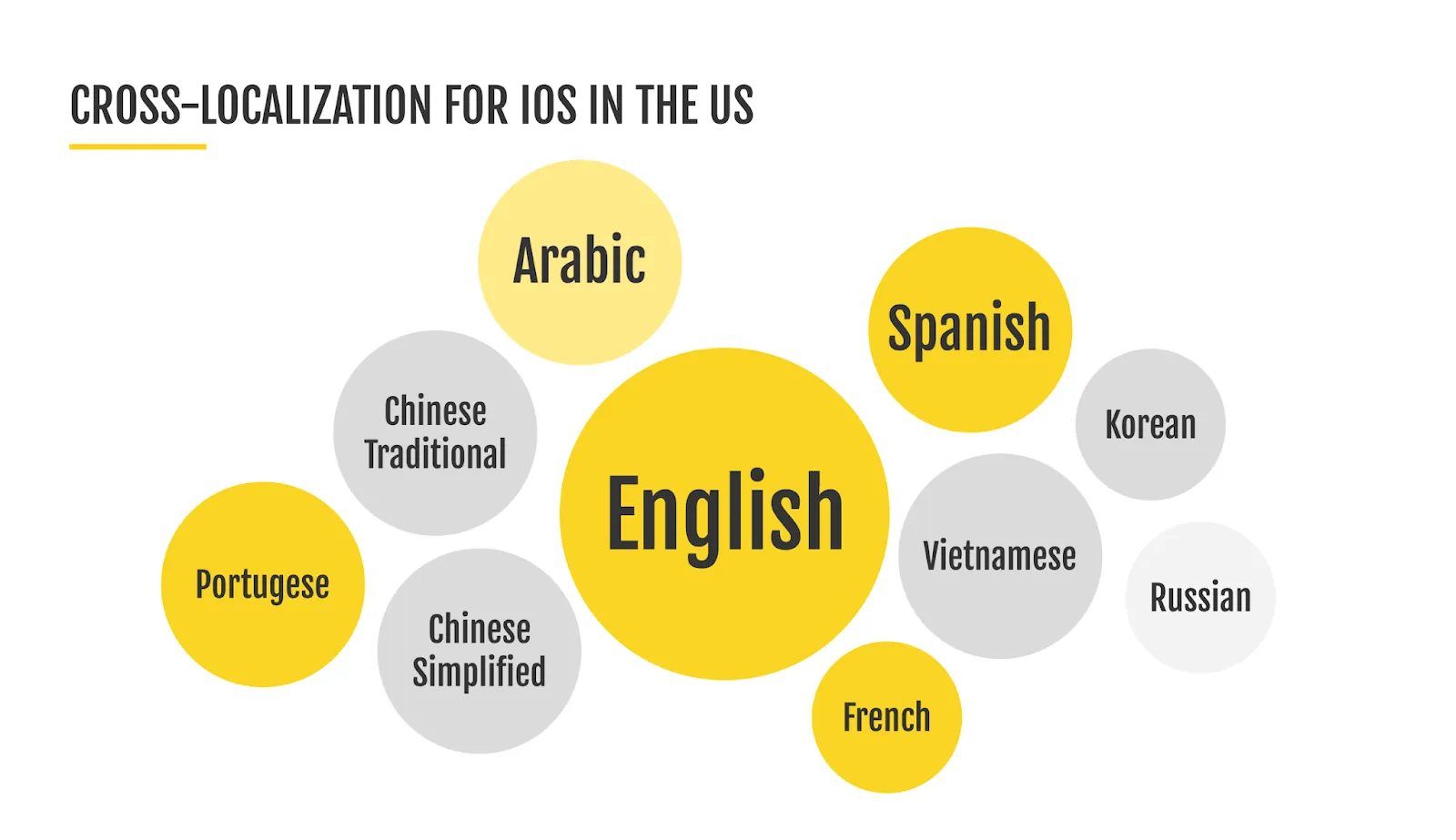
- For Metadata Optimization on Android, use the Google Natural Language API to see how the algorithm interprets your metadata. According to Igor Blinov (ASO Director at Yodel Mobile), Google can identify relevant keywords for your listing without relying on keyword density, making more accurate associations with a wider range of terms, beyond just the specific keywords you target. To optimize your game’s ranking, Google Natural Language API focus on these sections:
- Category Section: Keep it above 0.8 to rank for more keywords, including competitors.
- Moderation: If this score is 0.1, the algorithm may penalize your listing.
- Entities: Identify key terms the algorithm recognizes and ensure they align with your ASO strategy.
- “Don’t overlook auto-suggested keywords from ASO tools like AppTweak. Even though they often have low search popularity, they should be included in the metadata – especially for Google Play. Why? Because these suggestions are based on real user behavior. Google Play auto-completes queries using recent searches and semantic trends. That means even low-volume keywords often reflect high-intent, actively used phrases. By including them, you align your app with how users actually search – not just what the tools can quantify.” – Marek Pasieczny, ASO Manager at Huuuge Games.
- The short description on Android affects more than just rankings. So if you can’t find impact on store ranking with the short description, try A/B testing for impact on CR. Here’s an example of short description test results:

As a best practice, metadata should be reviewed monthly for emerging trends and updated quarterly for core markets to maintain stability without unnecessary changes.
2. Featuring, Promotional Content, & In-App Events (IAE): The Power Trio for Organic Growth
Getting featured, running promotional content, and leveraging IAE remain key drivers of visibility and downloads in 2025. These strategies provide positive signals to store algorithms and boost organic performance.
According to Catón Pisani, Senior ASO Manager at Homa, one of their games saw a 15% revenue increase and up to 1M additional installs during a featured week. However, featuring is becoming more competitive, making long-term relationships with Apple and Google essential for publishers.
“At Babbel, we strategically design content that resonates with our audience while aligning with Apple and Google’s content strategy to grab the editorial’s team attention. This increases our chances of being featured,” – Agata Jajszczyk, Principal ASO at Babbel.
Here are some tips for maximizing impact on promotional content:
- Consistency is key. Running frequent promotional events helps maintain visibility over time. Senior UA Manager Oksana Bozhkova explains that by overlapping the end of one event with the start of the next, they were able to offset the natural decline in impressions and installs when a promotional event ends, ensuring a steady stream of installs.
- Optimize for engagement. Periodically conduct in-depth analyses of promotional content to identify which types bring the most value. Below is an example of a game for which AppAgent performed an audit.
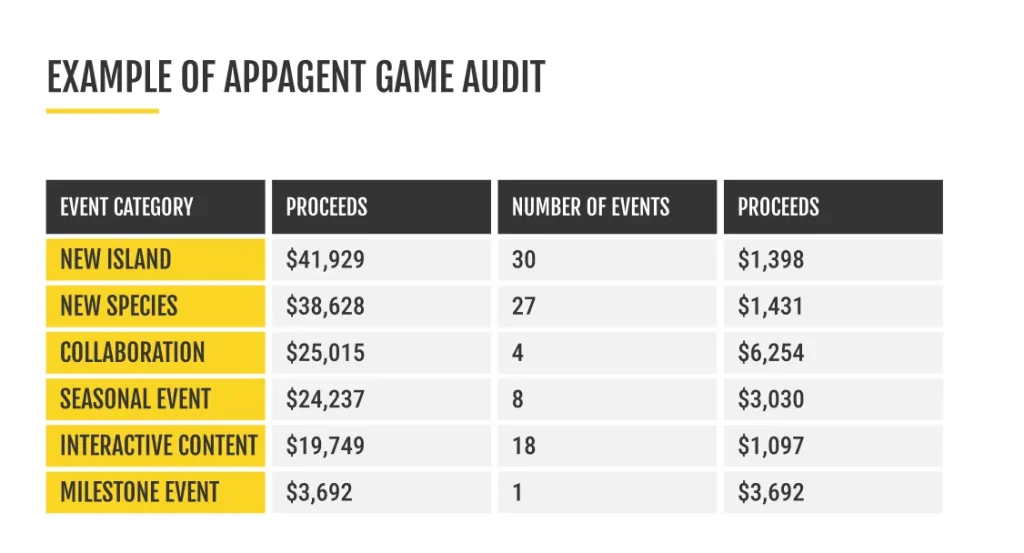
As the example shows, the highest number of events were in the ‘New Island’ and ‘New Species’ categories, but the most profitable events came from types like ‘Seasonal Event’ and ‘Collaboration’, meaning these kinds of events should be leveraged more.
3. Conversion Rate Optimization (CRO): Tailoring Strategies for Each Funnel
Optimizing Conversion Rates (CR) separately for different user funnels is crucial.
“Users coming from ads often make quick decisions, so the app product page should align closely with the content featured in the ads. This is where leveraging CPPs and CSLs can be very helpful to align users’ expectations between ads and store pages.” –Marek Pasieczny, Senior ASO Manager at Huuuge Games
Another often overlooked area is the split between new and lapsed users on Android. If you have a high number of lapsed users, it may be worth testing custom store listings for them.
Below is an example of a test conducted by AppAgent, comparing the conversion rate with and without a tailored custom store listing for lapsed users. The results speak for themselves.
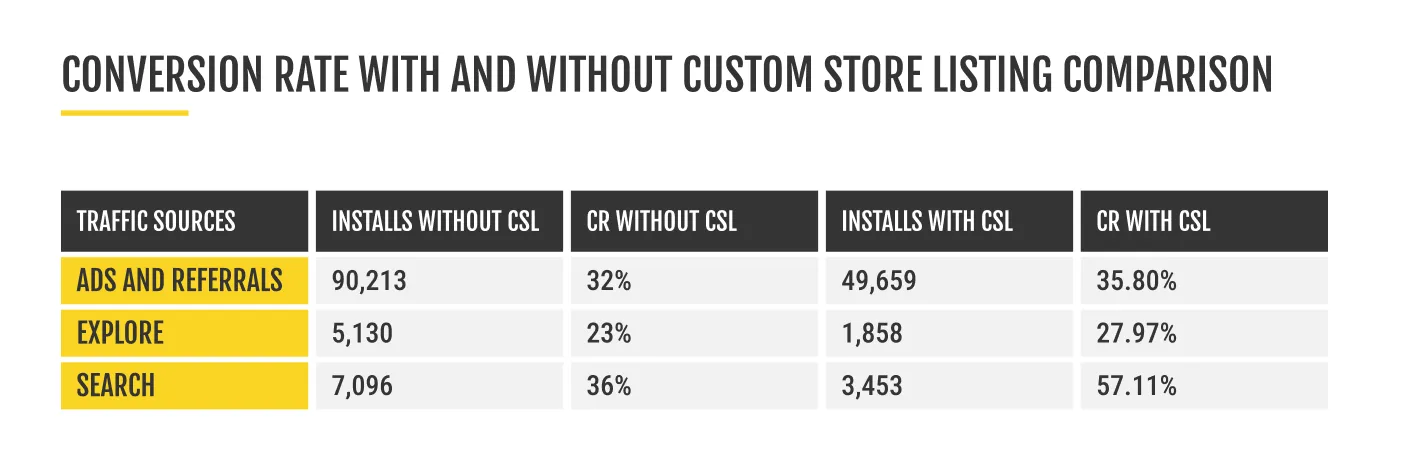
Here are some tips for Conversion Rate Optimization:
- Test feature graphics for their impact on Google Ads if it’s an important channel for your traffic. Even without an app preview video, optimizing the feature graphic can improve conversion rates, as Google uses it for auto-generated ad assets. A/B test example below:

- Run A/B tests using Custom Store Listings for:
- Better evaluation: Track CR for each traffic source without skewed averages.
- More tests: Run up to 55 experiments (50 CSLs + 5 standard A/B tests), bypassing Google Play’s limits.
- Improved targeting: If your core market is the US, this setup helps avoid users from Tier-3 countries (e.g., Pakistan, India) who set their phones to en-US.
4. ASO, Monetization, & UA: The Interplay Between Organic & Paid Growth
Success in ASO is deeply tied to monetization and UA. Games with strong retention and high in-app purchase (IAP) revenue send stronger signals to store algorithms, improving visibility and rankings.
In this regard, Google Play has introduced new metrics- DAU/MAU Ratio and User Loss Rate– that will affect app visibility and rankings. Apps that fail to meet these thresholds may receive warnings in Android Vitals, experience reduced rankings, or lose visibility.
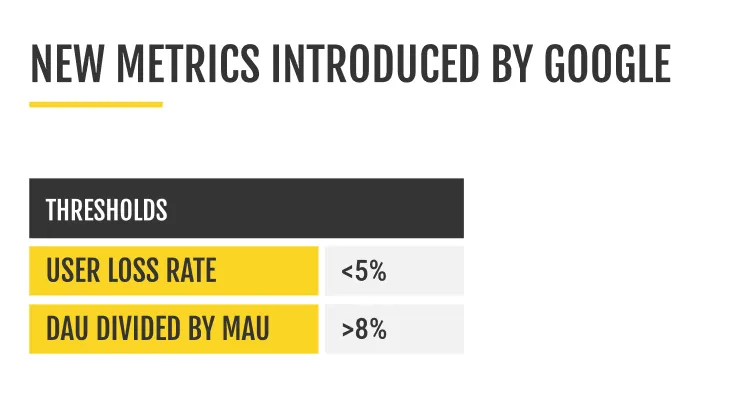
Here are some tips for managing this balance:
- UA spend accelerates organic growth. Success in ASO is not just linked to the game’s health metrics, but synergy between ASO and UA plays a big role.
- According to Matej Jurcak, Growth Partnerships at PixelFederation, games with strong paid traffic gain visibility more quickly and can climb keyword rankings with greater ease.
- Finally, technical stability is crucial for overall ASO success, so it’s important to work closely with your product, tech, and monetization teams for further growth.
You can also reach out to AppAgent for a full ASO audit to uncover new growth opportunities.
